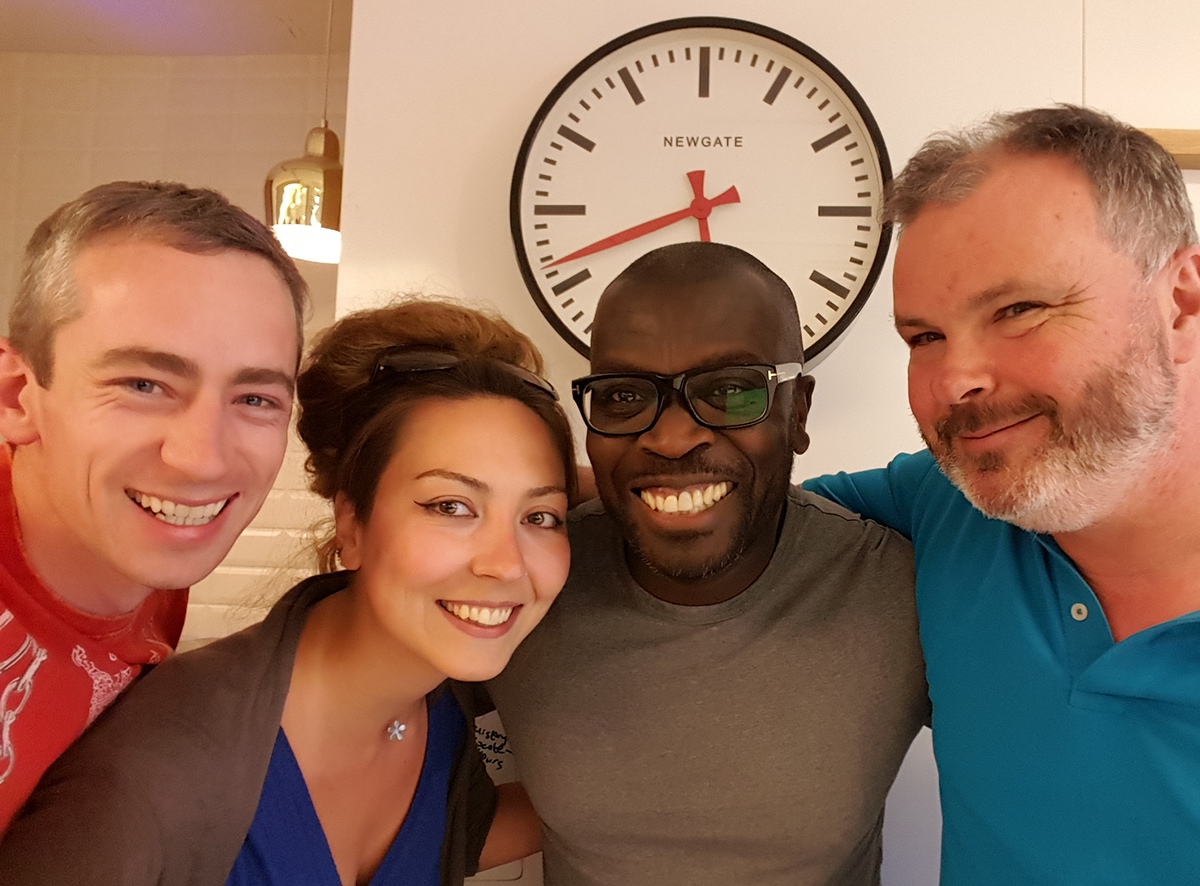Few words about the project
I enrolled to this course with the goal to learn the IDEO.org approach to creative problem solving, understand the principles of Human Centred Design, comprehend the processes & best practices of research, brainstorming and prototyping while tackling real world challenges. The course has given me the opportunity to immerse to the (3) phases of the Human Centred Design Process (Inspiration - Ideation - Implementation) to design innovative, impactful solutions that put people at the heart of the process.
Team
Our design team is a multidisciplinary one, comprised an Engineer & Startup Entrepreneur, a management Consultant & CEO, and a Customer Experience Consultant, all of us bringing a diverse skill-set on board.

James, Tania, John, Kevin
Design Problem:
We decided to tackle an emerging social problem; that of the lack of infrastructure to support emerging social entrepreneurs tackle some of the world's toughest challenges.
Solution:
How? By designing new systems &/or strengthening existing programs that cultivate and support social entrepreneurship as a viable career path.
That said our design proposition is to launch Youngpreneurs, an initiative where we put entrepreneurs into schools for informal Q&A sessions with budding entrepreneurs & video the sessions, making them available on a website, with tagging, sharing, and moderated commenting.
Duration: 7 weeks
Process & Takeaways
The IDEO design thinking approach consists of (3) phases: Inspiration - Ideation - Implementation
Inspiration
In the Inspiration phase I learned directly from the people we are designing for as we immersed ourselves in their lives and come to understand their needs. I contacted three entrepreneurs that are in one way or another related to the Social Entrepreneurship sphere. Interviews took place, two remotely via Skype and one in person which gave us some interesting insights into their lives as entrepreneurs and their views of the current educational system. The rest of the team hold interviews with students, professors and parents to make sure we have a broad range of views on the subject matter, coming from all parties involved.

Ideation
During the Ideation phase is when I actually started to make sense of what we learned, identify opportunities for design, and -further along the line- prototype possible solutions. We held several meetings with the team, equipped with loads of post it notes, coloured pens and some yummy treats to keep us going.
During the analysis of our findings we shared the interviewees' inspiring stories and our experiences from the locations we visited to observe our audience & see the world through their eyes. Everything was captured on the wall and it was then when we started searching for meaning. Patterns started to appear as we were clustering related information into groups. These groups formed the basis of our insight statements which we framed into generative questions that became the springboard to brainstorm our design solutions.

Prototype
Based on our analysis we came up with some interesting insights; insights that we had to narrow down and cluster in groups of 3, which were translated into How Might We questions to help us brainstorm ideas/solutions. At this stage we were all aiming to facilitate the environment to encourage creative exploration & ideas exchange. Even the craziest idea had to be on the table (wall)!
Based on our analysis we came up with some interesting insights; insights that we had to narrow down and cluster in groups of 3, which were translated into How Might We questions to help us brainstorm ideas/solutions. At this stage we were all aiming to facilitate the environment to encourage creative exploration & ideas exchange. Even the craziest idea had to be on the table (wall)!
Prototyping is essentialy an answer to a theoretical question; rather than testing an entire idea we came up with specific (HMW) questions to help us design a good prototype. Out of these we picked the one that sounded more realistic to accomplish given time and budget constrains.

Implementation
In the Implementation phase we will bring our solution to life. By creating a prototype of our design solution we will be able to test it in real world conditions and understand the feasibility and viability of our idea. Luckily, iteration is a core concept of this stage. I am a huge advocate of the iterative approach to problem solving because it makes feedback from the people we’re designing for a critical part of how our solution evolves. By iterating, refining, and improving we will come up with a successful solution to our design challenge.

Solution
Youngpreneurs, an initiative where we put entrepreneurs into schools for informal Q&A sessions with budding entrepreneurs & video the sessions, making them available on a website, with tagging, sharing, and moderated commenting.
Youngpreneurs, an initiative where we put entrepreneurs into schools for informal Q&A sessions with budding entrepreneurs & video the sessions, making them available on a website, with tagging, sharing, and moderated commenting.

Experience Map for Teachers
Testing / Iterating
We created an experience map for school principals & teachers (above) and interviewed 2 entrepreneurs to test/validate our idea (video)
We have also created a landing page with the aim to collect emails, gauge interest and spread the word about the project amongst our 3 target users.
Results
The journey so far has been an inspiring one. Despite our busy lives, we worked hard as a team to design a viable, feasible and desirable solution for young (social) entrepreneurs.
Here is the link to our final presentation.

